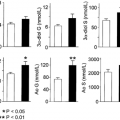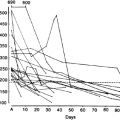INTERCOMPARTMENTAL MODULATION IN THE TESTIS
Throughout this chapter, the seminiferous tubules and intertubular tissue have been considered as independent entities. However, there is increasing evidence that this approach is unwarranted. It is well documented that testosterone is required for the process of spermatogenesis, indicating that the Leydig cells at a local level are able to influence the seminiferous tubules.122 Additionally, the seminiferous tubules are involved in the modulation of Leydig cell function. There is also evidence that the Leydig cells exhibit changes in size according to the stage of the seminiferous cycle in the tubules immediately adjacent to them.123 Furthermore, the Sertoli cells show marked changes in function in association with spermatogenic damage and the stage of the seminiferous cycle.124 All of the agents used to induce experimental damage to spermatogenesis decrease the parameters of Sertoli cell function, such as seminiferous tubule fluid production, ABP production, and inhibin production. These changes occur despite a relatively well-maintained morphology of the Sertoli cell; they indicate the importance of obtaining sensitive biochemical indices of Sertoli cell function.
Stay updated, free articles. Join our Telegram channel

Full access? Get Clinical Tree





